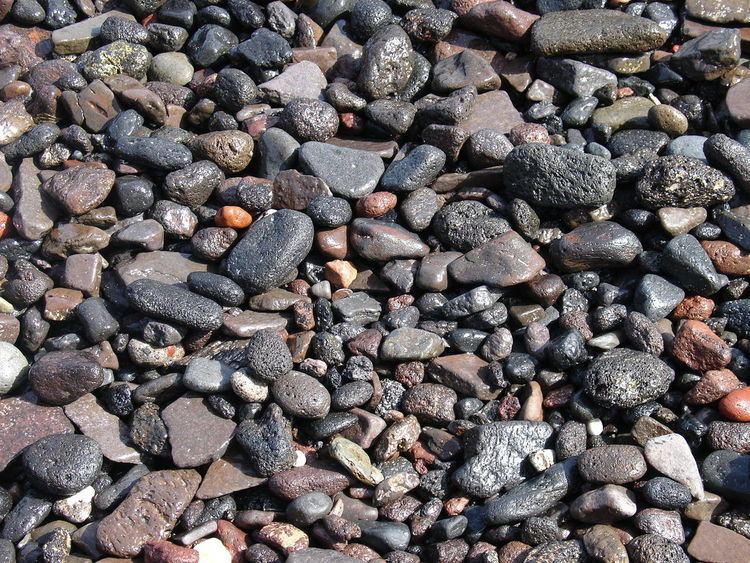 | ||
Gravel /ˈɡrævəl/ is composed of unconsolidated rock fragments that have a general particle size range and include size classes from granule- to boulder-sized fragments. Gravel is categorized by the Udden-Wentworth scale into granular gravel (2 to 4 mm or 0.079 to 0.157 in) and pebble gravel (4 to 64 mm or 0.2 to 2.5 in). One cubic metre of gravel typically weighs about 1,800 kg (or a cubic yard weighs about 3,000 pounds).
Contents
Gravel is an important commercial product, with a number of applications. Many roadways are surfaced with gravel, especially in rural areas where there is little traffic. Globally, far more roads are surfaced with gravel than with concrete or tarmac; Russia alone has over 400,000 km (250,000 mi) of gravel roads. Both sand and small gravel are also important for the manufacture of concrete.
Geological formation
Large gravel deposits are a common geological feature, being formed as a result of the weathering and erosion of rocks. The action of rivers and waves tends to pile up gravel in large accumulations. This can sometimes result in gravel becoming compacted and concreted into the sedimentary rock called conglomerate. Where natural gravel deposits are insufficient for human purposes, gravel is often produced by quarrying and crushing hard-wearing rocks, such as sandstone, limestone, or basalt. Quarries where gravel is extracted are known as gravel pits. Southern England possesses particularly large concentrations of them due to the widespread deposition of gravel in the region during the Ice Ages.
Modern production
As of 2006, the United States is the world's leading producer and consumer of gravel.
Etymology
The word gravel comes from the Breton language. In Breton, "grav" means coast. Adding the "-el" suffix in Breton denotes the component parts of something larger. Thus "gravel" means the small stones which make up such a beach on the coast. Many dictionaries ignore the Breton language, citing Old French gravele or gravelle.
Gravel often has the meaning a mixture of different size pieces of stone mixed with sand and possibly some clay. American English also allows small stones without sand mixed in also known as crushed stone.
Types
Types of gravel include:
Relationship to plant life
In locales where gravelly soil is predominant, plant life is generally more sparse. This outcome derives from the inferior ability of gravels to retain moisture, as well as the corresponding paucity of mineral nutrients, since finer soils that contain such minerals are present in smaller amounts.
